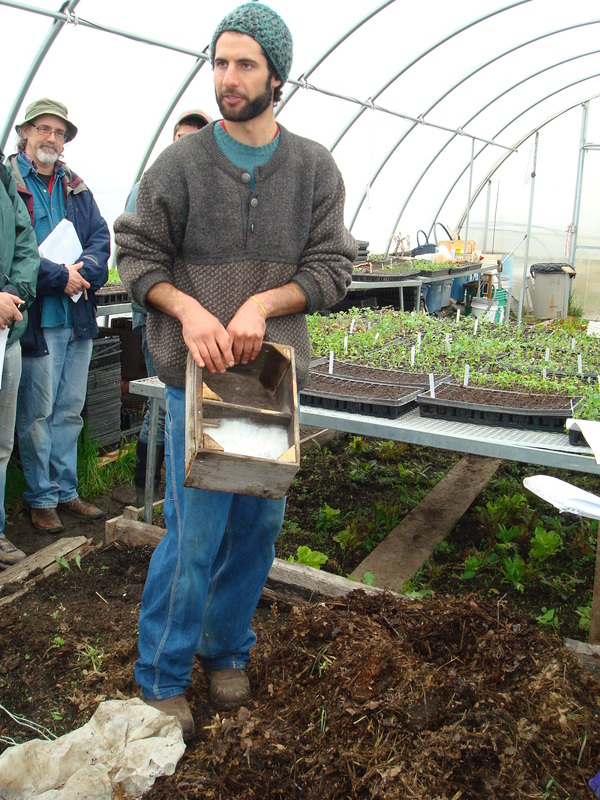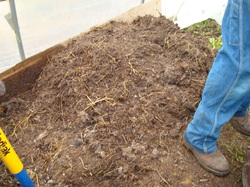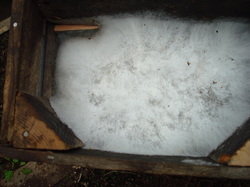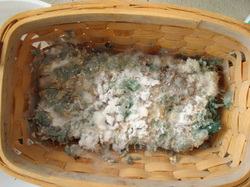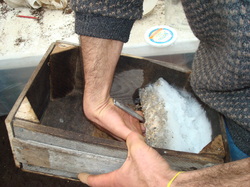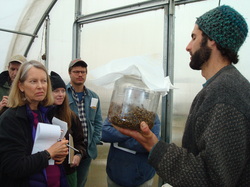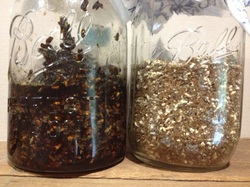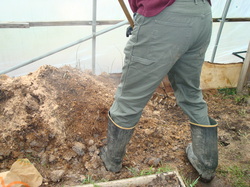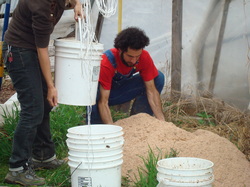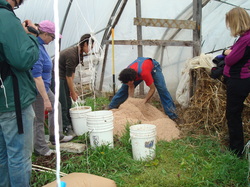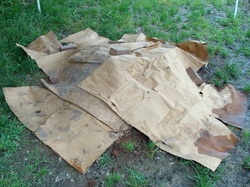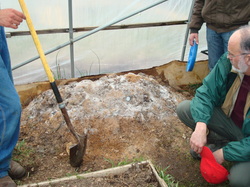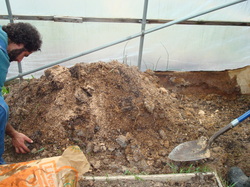Making IMO is a bit of a process. First, you collect the IMO. This is called IMO 1. Then you preserve the IMO 1 to make IMO 2. Then you take IMO 2 to make IMO 3 and then finally you use IMO 2 and IMO3 to make IMO 4, which is the final product that you use.
|
IMO 4 Materials: IMO 3, topsoil or finished compost, 5 gallon bucket, non-chlorinated water, sea water (or sea salt), OHN, BRV, FAA, FPJ To make your own sea salt, mix 1 oz (~2 Tbs) sea salt with 32 oz H2O, which will give you about 3.12% salinity. Natural sea water has about 3.5% salinity. Then use 22 oz of this mixture for each 5 gallon bucket. If you don't have FAA or FPJ made, you can still make IMO 4 with just OHN and BRV. Make in area protected from rain on natural ground Mix IMO 3 with equal parts topsoil. You can also use a 2:1:1 mixture of IMO3:topsoil:compost. I have also used equal parts of IMO 3 and just finished compost, but make sure the compost is finished. Fill 5 gallon bucket with non-chlorinated water and add : 1/2 Tbs OHN, 1 Tbs BRV, 22 oz. Sea Water, 1/2 Tbs FAA, 1 Tbs FPJ Mix liquid into soil/IMO 3 pile until 65-70% moisture content. ~ 2 gal/50# Leave pile 18" tall (taller if colder temps) Cover with breathable material (straw mats are best). Use tarp if cold. Pile heats up fast, 12-24 hrs., turn daily once it reaches ~140 F Continue to turn until IMO 4 has fully fermented and pile has cooled down. 7-14 days. IMO 4 is a stable product and has many uses. It should be stored in contact with the ground, but protected from rain. |
